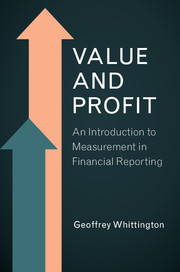Book contents
- Value and Profit
- Value and Profit
- Copyright page
- Dedication
- Contents
- Preface
- Abbreviations
- 1 An Introduction to the Measurement Problem in Financial Accounting
- 2 Fundamentals
- 3 Historical Cost Accounting
- 4 Current Value Accounting 1: Valuation
- 5 Inflation and the General Price Level
- 6 Current Value Accounting 2: Capital Maintenance Concepts and Real Terms Accounting
- 7 Review
- Bibliography
- Index
- References
Bibliography
Published online by Cambridge University Press: 31 August 2017
- Value and Profit
- Value and Profit
- Copyright page
- Dedication
- Contents
- Preface
- Abbreviations
- 1 An Introduction to the Measurement Problem in Financial Accounting
- 2 Fundamentals
- 3 Historical Cost Accounting
- 4 Current Value Accounting 1: Valuation
- 5 Inflation and the General Price Level
- 6 Current Value Accounting 2: Capital Maintenance Concepts and Real Terms Accounting
- 7 Review
- Bibliography
- Index
- References
- Type
- Chapter
- Information
- Value and ProfitAn Introduction to Measurement in Financial Reporting, pp. 315 - 340Publisher: Cambridge University PressPrint publication year: 2017



